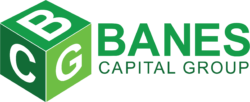Dangerous Curves Ahead
Not only was there a huge jobs miss in August, the Fed’s Beige Book noted a deceleration in growth. Even the Atlanta Fed’s GDP–Now forecast has been slipping. Their Q3 estimate had been at or above 6% through August 24th. It then fell from 3 readings in the 5% range down to 3.7% as of September 2nd. In Formula I racing, the cars scream down the straights and then brake into the turns. Stocks and the economy have been on a tear, but there are signs of slowing. What lies ahead – a turn or just a curve? Speaking to activity in the 12 Fed districts, the report overview said: “Economic growth downshifted slightly to a moderate pace in early July through August. The stronger sectors of the economy of late included manufacturing, transportation, nonfinancial services, and residential real estate. The deceleration in
Quick Links
economic activity was largely attributable to a pullback in dining out, travel, and tourism in most Districts, reflecting safety concerns due to the rise of the Delta variant, and, in a few cases, international travel restrictions. The other sectors of the economy where growth slowed or activity declined were those constrained by supply disruptions and labor shortages, as opposed to softening demand. In particular, weakness in auto sales was widely ascribed to low inventories amidst the ongoing microchip shortage, and restrained home sales activity was attributed to low supply.” While there’s no specific test for the delta variant, any flu–like symptoms or positive results are all viewed as Covid. There’s also reporting of a mu (5th) variant that is said to be vaccine resistant.
Last week, the Bond Market Review commented on the statements made by Fed Vice Chair Richard Clarida. He is probably one of the most in tune with Chairman Powell. We spoke to the “substantial further progress” towards the Fed’s mandate and the 800K job creation for the last 3 months coming into August. Clarida said: “If that happens, I will also support commencing reduction in the pace of our purchases later this year.” We said: “Read that text to be ‘if that happens’ and a December start for tapering!” With only 235K jobs created versus expectations of 733K for August, the Fed was left scratching their collective heads. While St. Louis FRB President James Bullard remains adamant that the Fed should begin the tapering of asset purchases soon in light of the “incipient housing bubble” that stimulus has assisted, others were taken aback by the huge payroll miss for August. While still a proponent of starting the taper in 2021 with much Fed consensus, Atlanta’s Raphael Bostic said: “The weaker data that we’ve seen more recently suggests to me that maybe there’s a chance for some play on this …” If jobs had held up, the Fed would probably have signaled intentions for tapering following their September 22nd meeting. The data suggest they’ll delay those announcements until their November 3rd meeting – if hiring data indeed improves yielding ‘further progress.’ However, that early–November meeting will only allow the Fed to see one more month of payroll numbers.
The BMR is a little skeptical of improving employment, especially given this week’s directives coming from the White House. They reversed their earlier stance that vaccines would not be mandatory with a new announcement that all federal workers, contractors, and large private companies would be required to get vaccinated or be subject to weekly testing or termination. This won’t be received well by those that believe in natural immunity or those with the ‘don’t tread on me’ mindset – or even the science, with newer Covid variants reported to be vaccine resistant. Our skepticism stems from an already weak–August jobs report that could be accompanied by weakening future data if the 80 million or so not yet vaccinated choose to retire or quit their jobs rather than to yield to such requirements. We’ve read countless stories of health workers that have quit their jobs rather than to get vaccinated – and the reduced hospital room capacity resulting from those decisions. Our comments are not intended to be political but rather an assessment of jobs data going forward. Curiously, over 640,000 postal workers were said to be excluded from the ‘jab or no job’ policy. We expect a huge political and legal battle over the coming months with few outright winners.
Looking Ahead
- Equity cycles show a low near September 15th and a more–important high near September 24th
- Bond yields should be mostly sideways – but have a trend–change high due near September 23rd
- The FOMC will update their interest–rate policy with their statement on Wednesday (09/22) at 2 p.m. ET
September Sag Saga
The Nasdaq made new high on Tuesday (9/07) and then eased to join most other indexes. The S&P has traded lower since its high on September 2nd, and many other U.S. indices also made record highs early this month. The seasonal factors we addressed for stocks trading up into Labor Day held true again this year. However, statistically September usually has the worst monthly performance for stocks, so caution is warranted. It’s also the case that for many years, a selloff into an October low has provided a buy opportunity. Stocks traded off into September 24th and October 30th in 2020 before a blistering 40% rally that took the S&P from 3,234 to 4,546. Stocks bottomed on October 3rd, 2019 – and were rallying nicely until Covid–19 showed up and ushered in a pandemic selloff into March 2020.
Over the years, there have also been some prolific rallies out of larger selloffs into March. The S&P has doubled since the Covid low made in March 2020. The last mega–low in stocks came in March 2009 during the financial crisis. Before that, stocks vaulted out of the post–911 low made in March 2003 that corrected the ‘90s tech rally.
Treasuries, Agencies, and MBS
The U.S. Treasury yield curve once again twisted steeper last week as yields fell by 1 and 1.5 bps at 2 and 5–years but rose by 1.5 and 2.5 bps at 10 and 30–years. Into today, that trend reversed with a flattening twist. Yields are .5 bps higher at the short end but 2.5 and 4.5 bps lower at 10 and 30–years. 30–year Freddie Mac mortgage rates rose 1 bps to 2.88% this week. 15–year rates also rose 1 bps to 2.19%. With inflation running over 5%, it was reported that 85% of high yield bonds have a ‘real negative yield’, meaning they are trading at a negative gap to the headline CPI rate (currently 5.4%). That Deutsche Bank report said the number was rarely above 0% and had never before exceeded 10% of outstanding high–yield debt. The high–yield index was 3.87% earlier this week.
FRB New York President John Williams still thinks it may be appropriate to taper QE this year – despite the poor job numbers in August. He said it was all about the accumulation of jobs with some months stronger and “some, not so strong.” He said the bad numbers could have been associated with the “delta variant having some effects, but it’s hard to really know.” Hard to argue with that! The European Central Bank lowered its bond purchases to a moderately lower pace but claimed it wasn’t tapering but merely recalibrating. On the other side, the Bank of England just increased asset purchases. Global QE could be with us for some time!
All of this week’s major auctions saw strong investor demand and were rated well. On Tuesday (9/08), the U.S. Treasury sold $58 billion 3–year notes at .447%. Demand fell to last month but was still good. The buying group that includes foreign central banks accounted for 56.7% of the offering versus a previous 55.4%. The dealer award was the second lowest on record. Wednesday’s 10–year note auction brought 1.338% for $38 billion in supply. Demand was very good but also a little lower versus the August offering. Foreign buying was 71.1%, down from a very–high (and record) 77.2% last month. The August 2031 maturity was reopened for this supply. Today’s $24 billion 30–year bond auction brought 1.91%. Demand was significantly better versus August. Foreign buying rose from 60.7% to 69.7%. The August 2051 was also reopened for his supply and the dealer award was the lowest on record.
Economics
The effects of a nationwide vaccine mandate remain to be seen. However, August job creation was the lowest in 7 months, initial jobless claims fell to a new pandemic low, available jobs hit a new record high, the number on some type of unemployment benefits fell back below 12 million, and 7 million Americans lost extended unemployment benefits this week. Coming into the August payroll numbers, Challenger Job Cuts showed 86.40% less cuts versus the pandemic data of last August. Into August 28th, Initial Jobless Claims fell from 354K to 345K. In the largest drop since June, they fell 35K to a pandemic low of 310K this week – very near levels preceding the debacle. Continuing Claims fell from 2,908K to 2,805K. They also then dropped to a fresh pandemic low of 2,783K.
It turns out the ADP report miss from last week was a good harbinger as August Nonfarm Payrolls rose by only 235K – far below the 733K expected and a 7–month low. However, 134K jobs were added in the 2–month revision. The U.S. Unemployment Rate fell from 5.4% to 5.2% – once again a level that a decade ago was associated with full employment until it fell to 3.5% before the pandemic. Private Payrolls were expected at 610K but increased by only 243K. Manufacturing improved by 37K. Average Hourly Earnings rose by .60% and the annual pace increased from 4.10% to 4.30%. Average Weekly Hours remained at 34.7. The Labor Force Participation Rate was steady at 61.7% and the Underemployment Rate dropped 9.20% to 8.80%.
The most curious development is that there are 2.2 million more job openings than the number of unemployed. JOLTS Job Openings rose from 10.185 million to a new record 10.934 million in July. In a callous observation, the jobs are there for those that want one – even if they’re not a perfect fit. Across the U.S., restaurants and businesses have limited hours because they can’t find workers. Fast food restaurants that would normally be open until 11 p.m. or midnight often have signs that they will close as early as 7 p.m. I’ve seen the signs many times over the past year – even at the place with the clown and the arches. The Fed’s Beige Book also said there were continued supply shortages and disruptions and problems filling employment positions. Labor demand is there but people either don’t want a job or they just can’t find one that suits them. Some districts noted an acceleration in wages brought about by ‘persistent and extensive labor shortages.’ Other constraints were high retirements and a lack of childcare options.
The number of ‘baby boomers’ as a percentage of the workforce peaked over the past year and, of course, new projections for the expiration of social security benefits made the news – with 2034 set as the year the system could no longer make payments. Being a member of the previously mentioned age bracket, I’ve been hearing that social security was in jeopardy since the ‘80s.
To paraphrase the White House National Economic Council Director, he basically said if you exclude the price increases of the items that are increasing the most, inflation isn’t that bad. Hard to argue with that either!
Consumer Comfort rose .7 to a pandemic high 58.2 last week but then dropped back .3 to 57.9. Personal Finances fell from the pandemic high of 71 to 70.6 but then rose to 70.8 – remaining resilient. The Buying Climate fell .4 to 49.4 and then steadied at that level. Nonfarm Productivity for Q2 rose by 2.10%. Unit Labor Costs rose by 1.30%. In July, Factory Orders rose by .40%. They were up .80% ex transportation. Orders for Durable Goods fell by .10% but were .80% higher ex transportation. Capital Goods Orders (business investment) rose by .10%. The ISM Services Index declined from 64.1 to a still strong 61.7 (above 50 is expansion).
Consumer Credit rose by $17.004 billion in July (versus $25 billion expected). That’s in line with healthy increases but far below the record $37.865 billion added in June! The 12–month gain in home prices of 18% (in July) was the largest since data began 45 years ago. In August, Auto Sales were down 18% year–over–year for cars and 24% for trucks as inventories hit record lows. June’s Trade Balance deficit was revised lower (from $75.5 billion to $73.2 billion) and then declined to $70.1 billion in July – as exports rose by 1.3% and imports fell .2%.
Friday is set for Producer Prices (August PPI), and July data for Wholesale Inventories & Trade Sales. Monday (9/13) reveals the U.S. Treasury’s Monthly Budget Statement for the 11th month of Fiscal 2021. Tuesday follows with NFIB Small Business Optimism and Consumer Prices (August CPI). Wednesday brings MBA Mortgage Applications (which fell 1.90% last week), Empire (New York) Manufacturing, August Import Prices, Industrial Production and Capacity Utilization. Thursday gives us jobless claims data, August Retail Sales, the Philadelphia Fed Business Outlook, July Business Inventories, and TIC Flows (net international investments into or out of U.S. assets). Friday reveals preliminary University of Michigan sentiment data. The following Monday (09/20) is set for homebuilder outlook (the NAHB Housing Market Index). That Tuesday updates August Housing Starts and Building Permits, along with the Current Account Balance for Q2. We plan on issuing the next BMR following Wednesday’s (9/22) August Existing Home Sales and the FOMC September meeting policy statements and comments.
Equities
Stocks rose into Labor Day per their seasonal tendency but have drifted since. The Dow Industrials fell 86.71 points or .24% last week to 35,369.09. The Dow was 1.38% lower through today. The Nasdaq gained 1.55% last week but is .75% lower this week. The S&P gained .58% but likewise is .93% lower this week. The Dow Transports lost 1.03% and are down another 2.10% this week. Bank stocks dropped 3.80% last week and are .60% lower this week.
Other Markets
Crude Oil gained .80% last week but is 1.66% lower this week. Natural Gas has been surging and just traded to its highest level since 2014. It’s up 234% to the June 2020 low and 98% higher for 2021. Commodities rose .43% last week but are .74% lower this week. Gold gained for a 4th week, adding .82%, but is off by 1.84% this week. The U.S. Dollar lost .71% last week but was .49% better through today. In turn, the Euro gained .72% last week but is .46% lower this week (very counter Dollar). The Japanese Yen rose .12% last week but is .01% lower this week. Japanese stocks are up 12% since August 20th! Corn tumbled 8.96% last week and is another 2.36% lower this week. Cotton lost .68% and is 1.11% lower this week.
“I believe in looking reality straight in the eye and denying it.” Garrison Keillor (What a great quote for 2021!)
Doug Ingram, Financial Economist
Additional Information is Available on Request
Banes Capital Group, LLC (BCG) has been granted permission by the author, Doug Ingram and Strategic Technical Initiatives, to distribute this market commentary (MC). All views, opinions and estimates included are his as of this date – and are subject to change without notice. Mr. Ingram’s views, opinions, and estimates are not necessarily those of BCG and there is no implied endorsement by BCG of any of the information contained within this MC (which may in fact directly conflict with those being published and distributed by BCG, whether or not contemporaneous). In the event of such conflict, BCG is not under any obligation to identify to you any such conflicts. This MC is for informational purposes only and does not constitute a solicitation or offer to buy or sell any securities, futures, options, foreign exchange or any other financial instrument(s) and/or to provide any investment advice and/or service. Although the information presented has been obtained from sources believed to be reliable, we cannot guarantee or assume any responsibility for the accuracy or completeness of the information shown herein.







